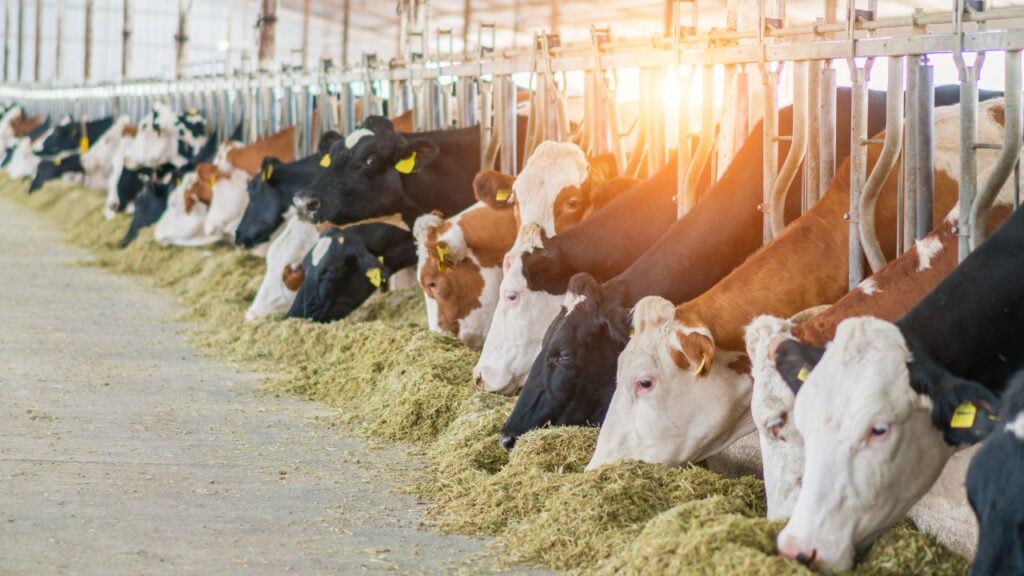In today’s uncertain financial world, building a strong, balanced investment portfolio is more important than ever. While many investors traditionally focus on stocks and bonds, commodities can offer a powerful way to diversify and reduce risk. By investing in tangible assets like gold, oil, and agricultural products, you can protect your wealth from inflation, market swings, and economic slowdowns.
Each commodity investment method comes with its own benefits and risks. Some provide tangible value, while others offer quick market access. From physical gold to blockchain-based assets, you have a wide range of options. Whether you’re interested in holding gold bars, trading ETFs, buying commodity-related stocks, or exploring crypto-backed tokens, there’s a path for every type of investor. Even farmland and futures contracts can offer strategic advantages when used wisely.
This guide explores seven practical ways to diversify your portfolio with commodities, explaining how each method works, the benefits and risks, and how you can get started.
Why Commodities Are Essential in a Diversified Portfolio
Commodities have long played a crucial role in the global economy. From food to energy to precious metals, they are the building blocks of daily life. But how do they fit into an investment strategy?
Hedge Against Inflation and Market Volatility
Commodities often rise in value when inflation increases. This makes them a natural hedge against the falling purchasing power of money. For example, when the cost of living goes up, so does the price of goods like oil or wheat. Investors holding these assets benefit from this rise.
Non-Correlation with Traditional Markets
Unlike stocks and bonds, commodity prices are influenced by different factors. Weather, geopolitical events, and supply-demand imbalances drive commodity markets. This means they often move independently from traditional financial markets, helping balance your portfolio.
Historical Performance Comparison
|
Asset Type |
Performance During Inflation |
Correlation with Stock Market |
|
Gold |
High |
Low |
|
Oil |
High to Moderate |
Low to Moderate |
|
Agriculture |
Moderate |
Low |
|
Stocks |
Low to Negative |
High |
7 Practical Ways to Diversify with Commodities
Let’s explore seven smart strategies to add commodity exposure to your investments.
1. Invest in Physical Commodities
Physical commodities refer to tangible assets you can touch and store. They’ve been trusted for centuries as a store of value, particularly in times of crisis or inflation. For conservative investors, this traditional method offers a safe and familiar entry into the commodity world.
This is the most direct way to invest. You buy and hold the actual asset, such as:
- Gold or silver bars
- Coins made from precious metals
- Crude oil (through specialized contracts or partnerships)
This approach appeals to those who prefer something they can physically store and see. It offers a sense of ownership that digital assets lack. However, liquidity can be an issue when you want to quickly convert them to cash.
Pros:
- No counterparty risk
- Real, tangible value
Cons:
- Storage and security issues
- Not very liquid
|
Physical Commodity |
Advantages |
Disadvantages |
|
Gold Bullion |
Safe haven asset |
Requires secure storage |
|
Silver Coins |
Affordable entry |
Lower resale demand |
|
Oil (physical) |
High value potential |
Difficult to store |
2. Commodity ETFs and Mutual Funds

These are ideal for investors seeking broad exposure with minimal effort. You don’t own the commodity directly but benefit from price movements. They’re available on most trading platforms, making them beginner-friendly.
If owning physical assets feels too complex, ETFs (Exchange-Traded Funds) and mutual funds offer a simpler solution.
Popular examples:
- SPDR Gold Shares (GLD) – Tracks the price of gold
- iShares S&P GSCI Commodity ETF – Diversified commodity exposure
These funds offer diversified exposure without the hassle of direct ownership. They are ideal for investors who want simplicity, transparency, and liquidity.
Pros:
- Easy to buy and sell
- Low fees
Cons:
- May not track prices perfectly
- Subject to market volatility
|
Fund Name |
Commodity Focus |
Expense Ratio |
|
SPDR Gold Shares (GLD) |
Gold |
0.40% |
|
iShares GSCI ETF (GSG) |
Mixed commodities |
0.75% |
|
Invesco Agriculture ETF |
Agriculture |
0.39% |
3. Commodity Stocks
This strategy allows you to tap into the profit potential of companies operating in the commodity value chain. You’re not only gaining from commodity price trends but also from corporate earnings, dividends, and stock appreciation.
You can invest in companies that operate in the commodity sector. These include:
- Oil companies (ExxonMobil, Chevron)
- Mining companies (Barrick Gold, Rio Tinto)
- Agricultural firms (Archer Daniels Midland)
This method blends traditional equity investing with commodity exposure. It’s a great choice for investors looking for dividend income along with exposure to resource prices.
Pros:
- Potential dividends
- Business growth opportunities
Cons:
- Company performance may differ from commodity price
- Stock market risks
|
Company |
Sector |
Dividend Yield |
|
ExxonMobil |
Oil |
3.5% |
|
Barrick Gold |
Gold Mining |
2.2% |
|
Archer Daniels Midland |
Agriculture |
2.1% |
4. Futures and Options Contracts
These instruments are common among institutional and seasoned investors. They provide direct exposure and high flexibility, but with high stakes. Mastery of market trends and risk management is key before diving in.
These are contracts to buy or sell a commodity at a specific price in the future. Futures are widely used by professionals.
They are powerful tools for hedging and speculation. But due to their complexity and leverage, they are best suited for experienced investors.
Pros:
- High leverage
- Ability to profit from both rising and falling prices
Cons:
- Very risky for beginners
- Requires margin and brokerage accounts
|
Term |
Definition |
|
Futures |
Agreement to buy/sell a commodity at a future date at set price |
|
Options |
Right (not obligation) to buy/sell at a certain price |
|
Margin |
Collateral required for trading futures/options |
5. Agriculture and Livestock Commodities

These investments are tied to the global food supply chain. Since everyone needs to eat, agriculture and livestock provide resilient demand even during economic downturns, making them a defensive asset class.
Investing in agricultural products like:
- Corn
- Soybeans
- Wheat
- Cattle and hogs
These can be accessed via ETFs or futures.
These are essential commodities that people consume daily. Prices often reflect seasonal patterns, making them appealing for investors who understand agricultural cycles.
Pros:
- Tied to essential food supply
- Seasonal trends offer opportunities
Cons:
- Affected by unpredictable weather
- Lower liquidity for some assets
|
Commodity |
Seasonal Demand |
ETF Example |
|
Corn |
Summer Peak |
Teucrium Corn Fund (CORN) |
|
Wheat |
Spring/Summer |
WEAT |
|
Livestock |
Year-Round |
COW |
6. Real Assets Linked to Commodities
This approach blends real estate and commodities, offering investors physical exposure and regular income. These are excellent for long-term holders focused on stability and wealth preservation.
This includes investments in:
- Farmland
- Oil rigs
- Timberland
These assets produce commodities and often generate rental income.
Real assets add physical stability to your portfolio. They also produce passive income through leasing or selling the output, making them attractive for long-term investors.
Pros:
- Tangible, long-term investments
- Passive income
Cons:
- High upfront cost
- Illiquid assets
|
Asset Type |
Income Potential |
Investment Platform Examples |
|
Farmland |
Lease income |
AcreTrader, FarmTogether |
|
Timberland |
Timber sales |
The Lyme Timber Company |
|
Oil Rigs |
Royalties |
EnergyFunders, Master LPs |
7. Cryptocurrency-Backed Commodities (Emerging Trend)
This new class of investments offers a fusion of digital convenience and real-asset backing. It’s growing quickly as blockchain adoption spreads, though due diligence is essential due to its novelty and risks.
With the rise of blockchain, investors can now buy tokenized commodities like:
- Gold-backed crypto (e.g., PAXG)
- Silver tokens
- Commodity-indexed coins
This innovation merges traditional commodities with the advantages of crypto. It’s gaining traction among digital-native investors seeking fast, borderless access.
Pros:
- Easy digital access
- Fast liquidity
Cons:
- Regulatory uncertainty
- Limited history
|
Token |
Backed Commodity |
Issuer |
|
PAXG |
Gold |
Paxos Trust |
|
DGLD |
Gold |
CoinShares |
|
XAUT |
Gold |
Tether Gold |
Risks to Consider Before Investing in Commodities
Price Volatility and External Factors
Commodity prices can swing wildly due to:
- Natural disasters
- Political conflict
- Currency fluctuations
Storage and Insurance Costs
Especially relevant for physical investments like gold and oil, which require:
- Secure vaults or tanks
- Insurance to protect against loss or theft
Pro Tips for Beginners in Commodity Investing
- Start Small: Begin with commodity ETFs to test the waters.
- Diversify Within Commodities: Spread your exposure across metals, energy, and agriculture.
- Stay Informed: Follow market trends and news updates.
- Use Dollar-Cost Averaging: Invest fixed amounts regularly to reduce risk.
Strengthen Your Portfolio with Commodity Exposure
Adding commodities to your investment mix can enhance your portfolio’s stability and performance. They provide a valuable hedge against inflation, diversify your holdings, and offer unique growth opportunities.
Whether you choose to invest in physical gold, ETFs, stocks, or farmland, commodities offer accessible ways to protect and grow your wealth in any market condition. With careful planning and the right tools, anyone can take advantage of this powerful asset class.
Remember: Start with your financial goals, assess your risk tolerance, and seek professional advice if needed. Diversifying your portfolio with commodities isn’t just smart—it’s strategic.


















![10 Countries With the Best Healthcare in the World [Statistical Analysis] Countries With the Best Healthcare in the World](https://articleify.com/wp-content/uploads/2025/07/Countries-With-the-Best-Healthcare-in-the-World-1-150x150.jpg)










